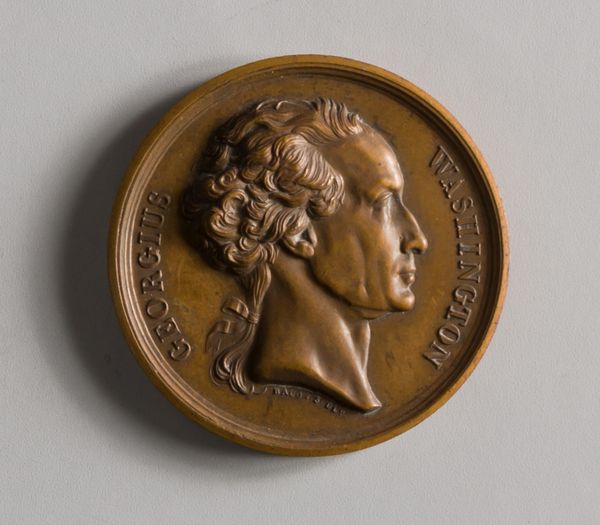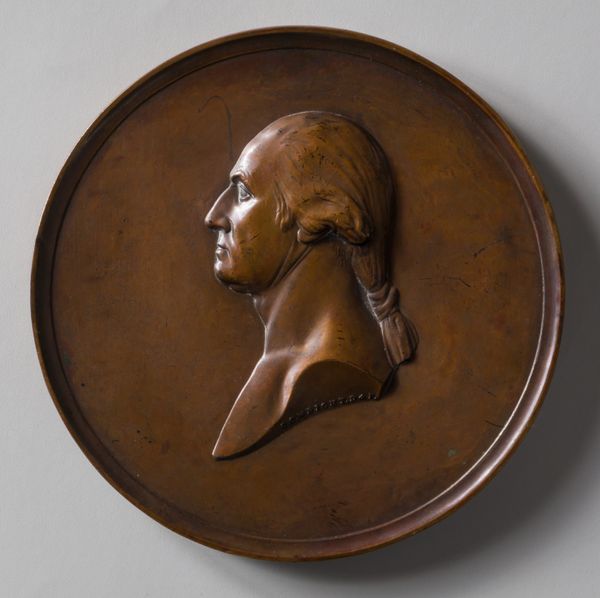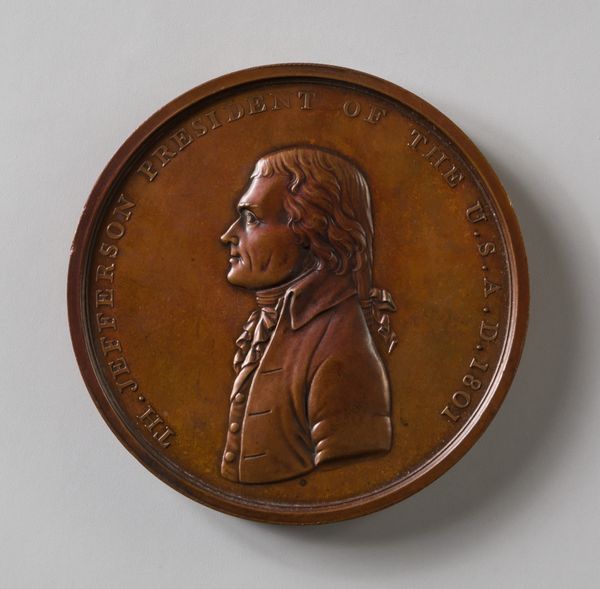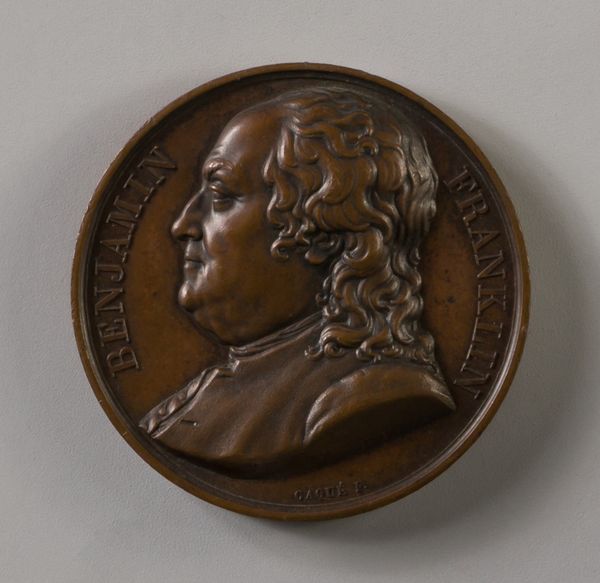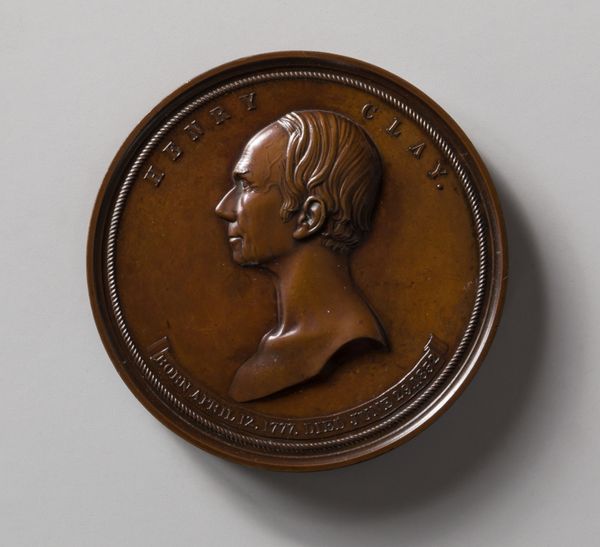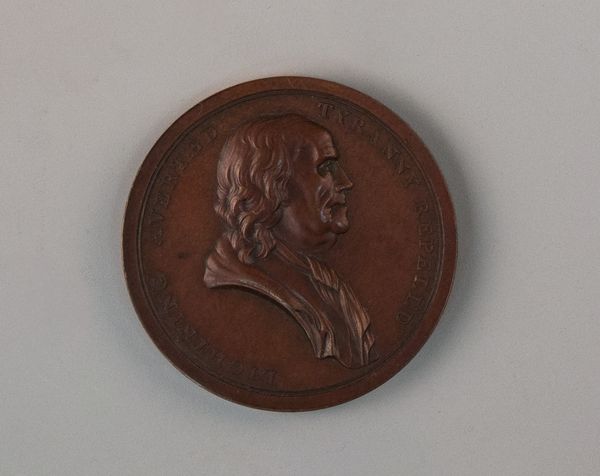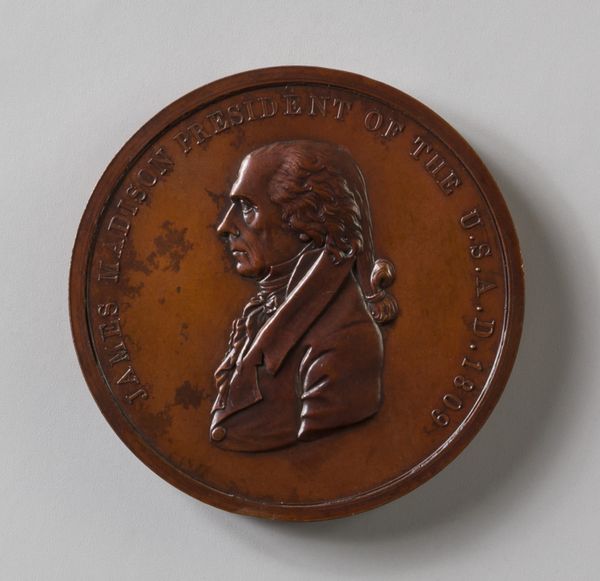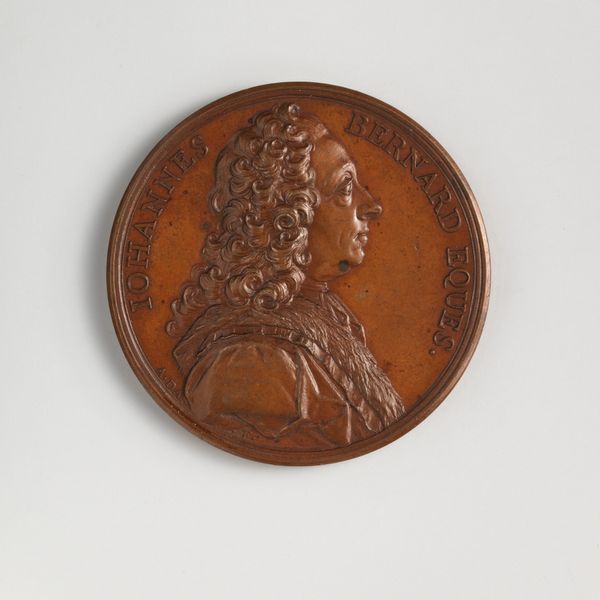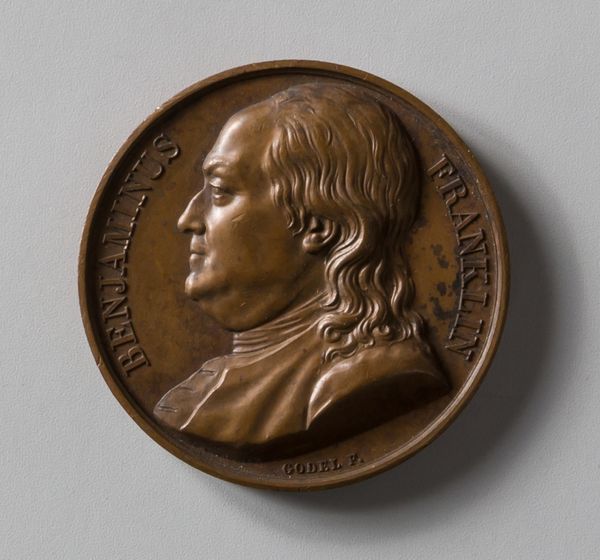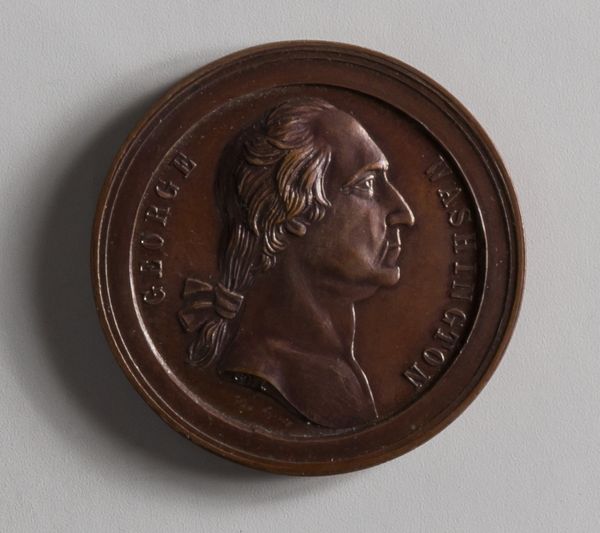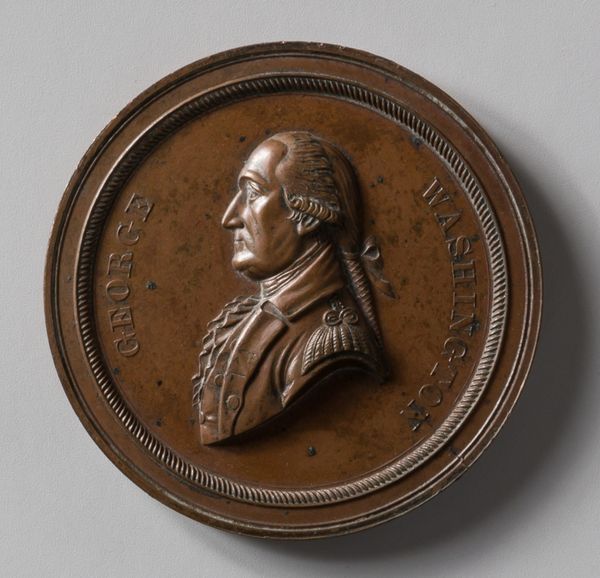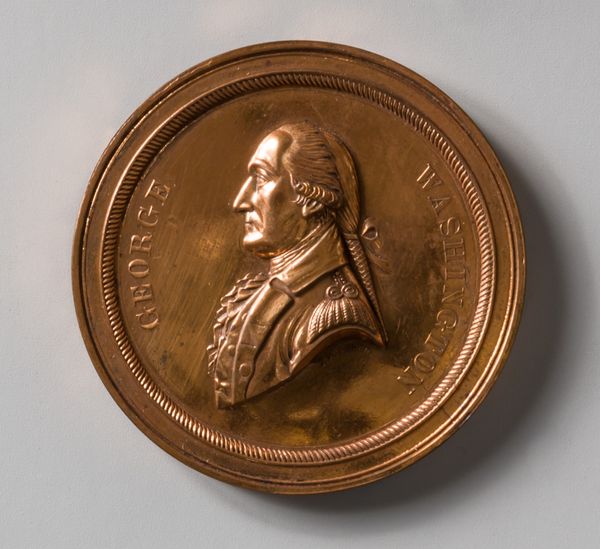
Medal of Captain Truxtun's Engagement with a French Cruiser in 1800 1800 - 1900
0:00
0:00
carving, metal, relief, bronze, sculpture
#
portrait
#
neoclacissism
#
carving
#
metal
#
relief
#
bronze
#
sculpture
#
carved
#
men
#
united-states
#
history-painting
#
profile
Dimensions: Diam. 2 1/4 in. (5.7 cm)
Copyright: Public Domain
Editor: So, this bronze relief is called "Medal of Captain Truxtun's Engagement with a French Cruiser in 1800," dating from 1800 to 1900, and is attributed to Moritz Fürst. It’s interesting how a naval victory is commemorated with…well, essentially a portrait. What jumps out at you? Curator: It's striking how this medal reduces a complex historical event to the image of a single man, focusing on individual heroism. Bronze, as a material, becomes a stand-in for strength, permanence, and the imperial aspirations of a burgeoning nation. Consider the labor involved in its creation: the mining, smelting, carving, and distribution of these objects. Editor: I see what you mean about labor. Did this kind of medal have a wider circulation? Who would have had access to something like this? Curator: Exactly! These weren't mass-produced trinkets. The intended audience was likely wealthy merchants or political figures—those with a vested interest in perpetuating a certain narrative about American power and its relationship to Europe. It's interesting to think about the metal itself; bronze was used as material in military cannons, which emphasizes war and power. This medal creates and distributes an ideological narrative that supported and celebrated those activities. Editor: That makes sense. I hadn't considered the medal's function as propaganda, shaping public opinion through material objects. Curator: And, fundamentally, through representing this naval commander, this medal creates the idea of value in service and expands access to this form of knowledge to a limited section of the public. That creates power for both parties. Where does that leave us, reflecting on this small object? Editor: Thinking about the production and distribution of the medal, alongside the social hierarchies of the time, adds layers to my understanding. It's more than just a commemorative object. Curator: Indeed, seeing it as a node within broader networks of production and power gives it new meaning.
Comments
No comments
Be the first to comment and join the conversation on the ultimate creative platform.
